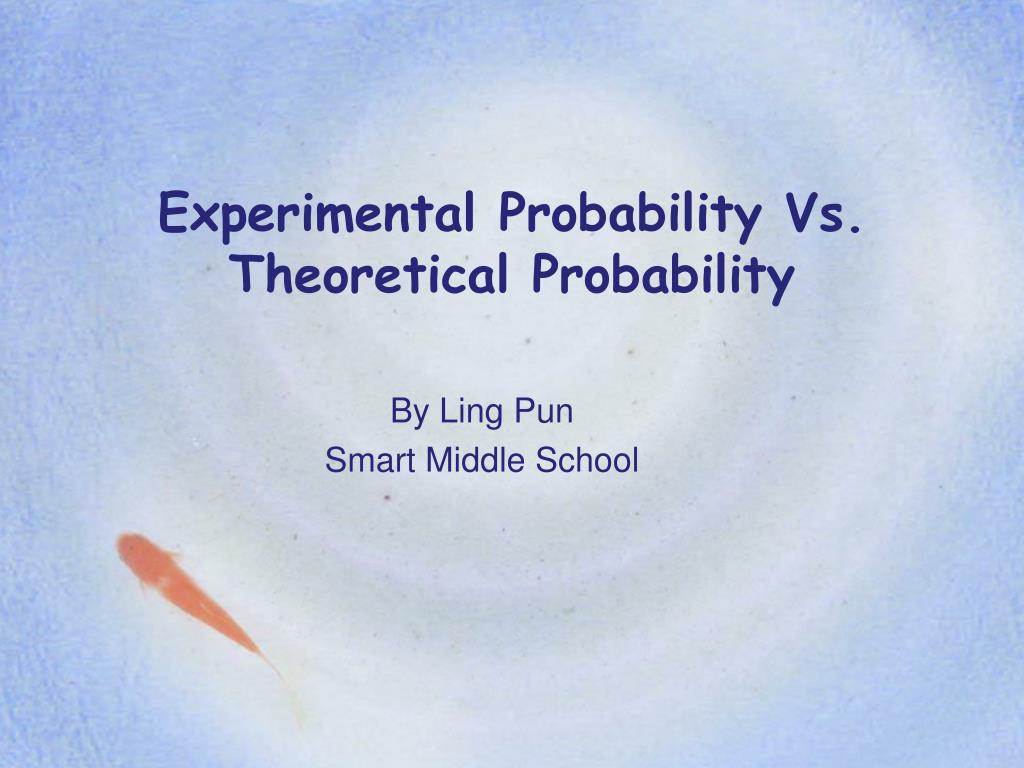
PPT Experimental Probability Vs. Theoretical Probability PowerPoint Presentation ID1300985
138 Share 16K views 2 years ago This video teaches viewers about experimental probability and theoretical probability. The video includes an example of experimental probability and.
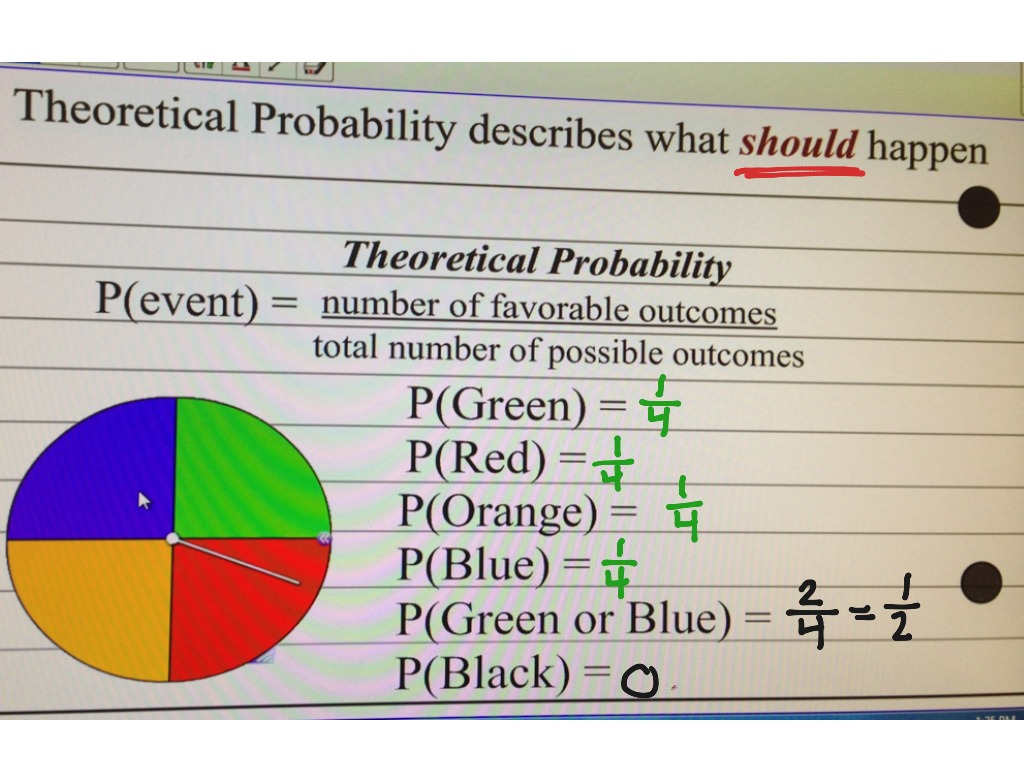
Experimental and Theoretical Probability Math ShowMe
Courses on Khan Academy are always 100% free. Start practicing—and saving your progress—now: https://www.khanacademy.org/math/cc-seventh-grade-math/cc-7th-p.

PPT Experimental Probability Vs. Theoretical Probability PowerPoint Presentation ID6032335
Probability is the number of favorable outcomes divided by the total number of outcomes. In this case that would be the number of simulations with 3 or more flips divided by the total number of simulations. Well, there weren't any simulations with 3 flips, there was one simulation with 4 flips. and one simulation with 5 flips.
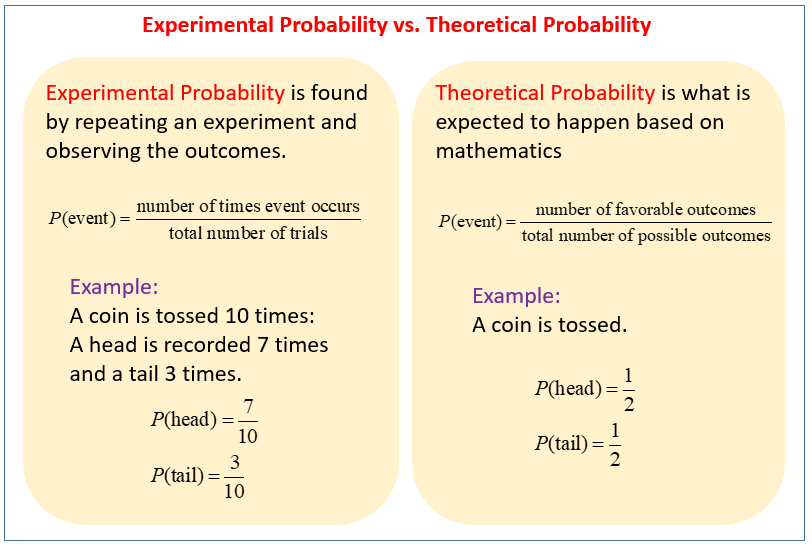
Theoretical Probability and Experimental Probability (solutions, examples, games, videos)
The chance of a happening is named as the probability of the event happening. It tells us how likely an occasion is going to happen; it doesn't tell us what's happening. There is a fair chance of it happening (happening/not happening). They'll be written as decimals or fractions. The probability of occurrence A is below.

Theoretical vs. Experimental Probability Anchor Chart Poster Anchor charts, Theoretical
Experimental probability is the ratio of the number of times an event occurs to the total number of trials. In other words, theoretical probability is a ratio that describes what should happen, but experimental probability is a ratio that describes what actually happened. You can use theoretical and experimental probabilities to distinguish.
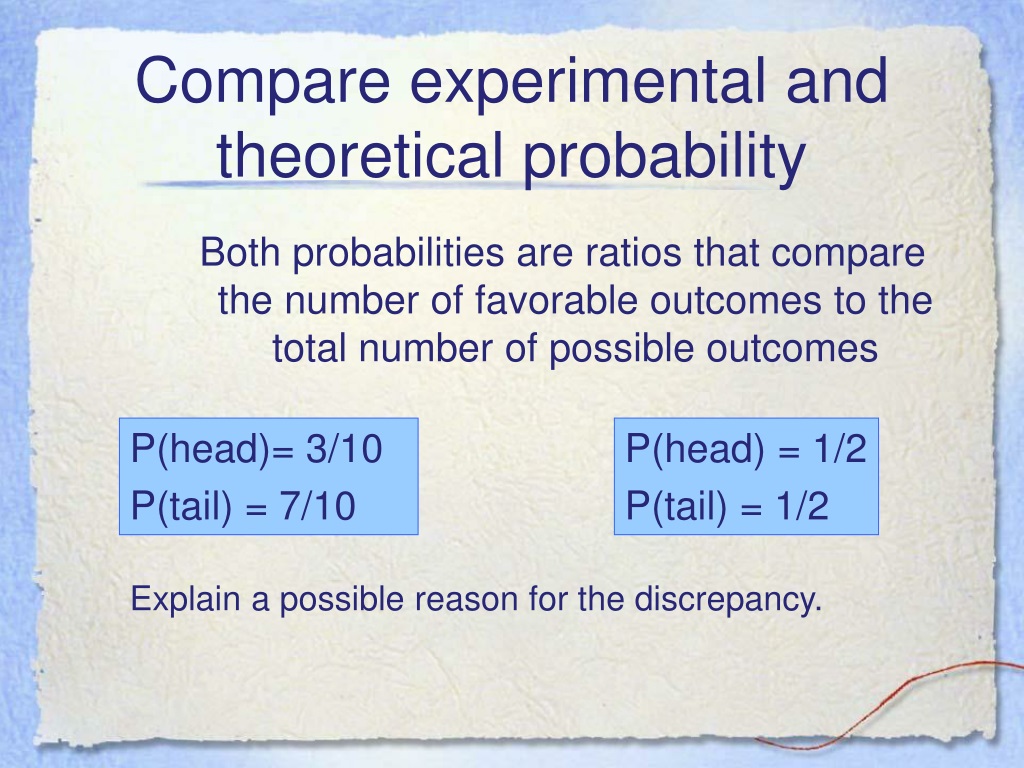
PPT Experimental Probability Vs. Theoretical Probability PowerPoint Presentation ID9487309
Theoretical probability describes how likely an event is to occur. We know that a coin is equally likely to land heads or tails, so the theoretical probability of getting heads is 1/2. Experimental probability describes how frequently an event actually occurred in an experiment.
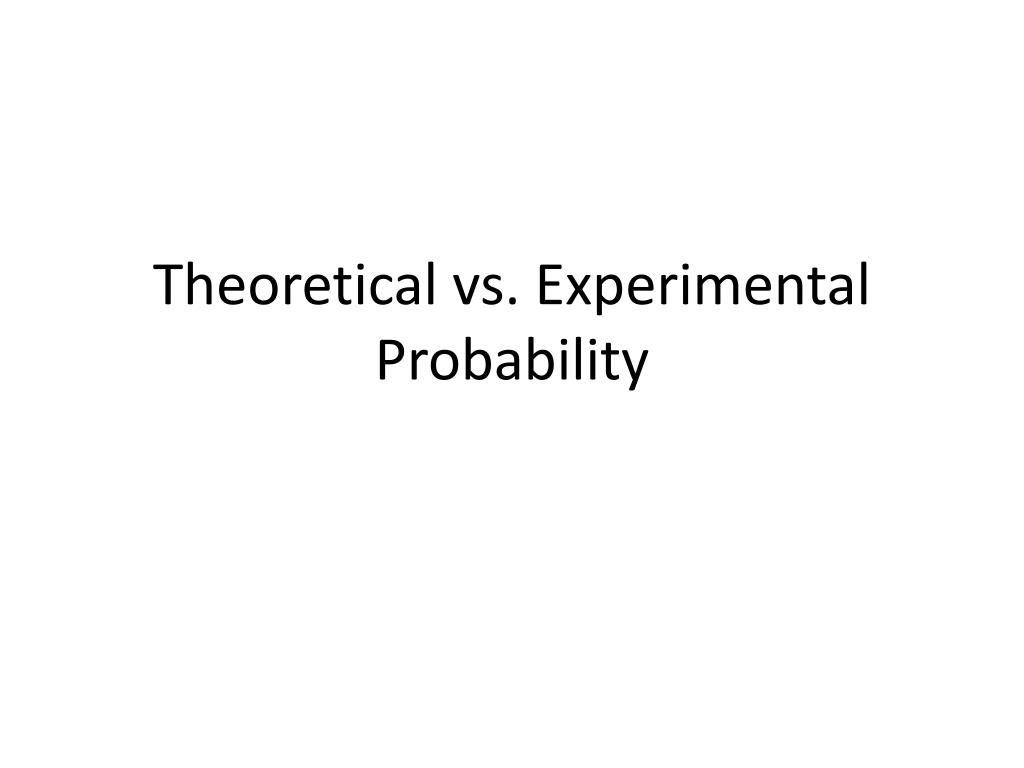
PPT Theoretical vs. Experimental Probability PowerPoint Presentation ID2537955
Comparing Theoretical And Experimental Probability. The following video gives an example of theoretical and experimental probability. Example: According to theoretical probability, how many times can we expect to land on each color in a spinner, if we take 16 spins? Conduct the experiment to get the experimental probability.
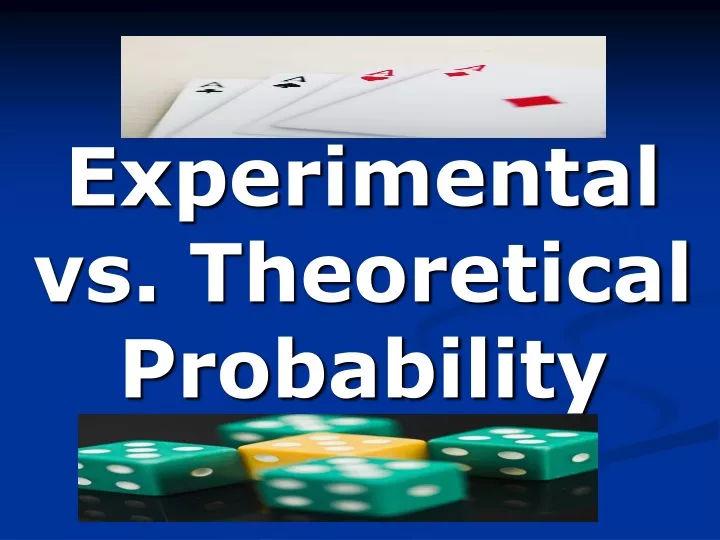
PPT Experimental vs. Theoretical Probability PowerPoint Presentation ID9333065
Experimental probability | Statistics and probability | 7th grade | Khan Academy Calculus 2 Lecture 7.1: Integration By Parts It's cable reimagined No DVR space limits. No long-term contract..

Theoretical vs Experimental Probability YouTube
A Results from an experiment don't always match the theoretical results, but they should be close after a large number of trials. Dave's coin is obviously unfair. B Dave's coin is obviously unfair. question d Dave continues flipping his coin until he has 100 total flips, and the coin shows heads on 47 of those flips.

Experimental vs Theoretical Probability Theoretical vs Experimental Probability
Frequently Asked Questions What is a theoretical probability? Theoretical probability calculates the likeliness of an event happening based on reasoning and mathematics. It forms a.

Experimental vs Theoretical Probability Theoretical vs Experimental Probability
Figure 4-4 shows a graph of experimental probabilities as n gets larger and larger. The dashed yellow line is the theoretical probability of rolling a four of 1/6 \(\neq\) 0.1667. Note the x-axis is in a log scale. Note that the more times you roll the die, the closer the experimental probability gets to the theoretical probability. Figure 4-4
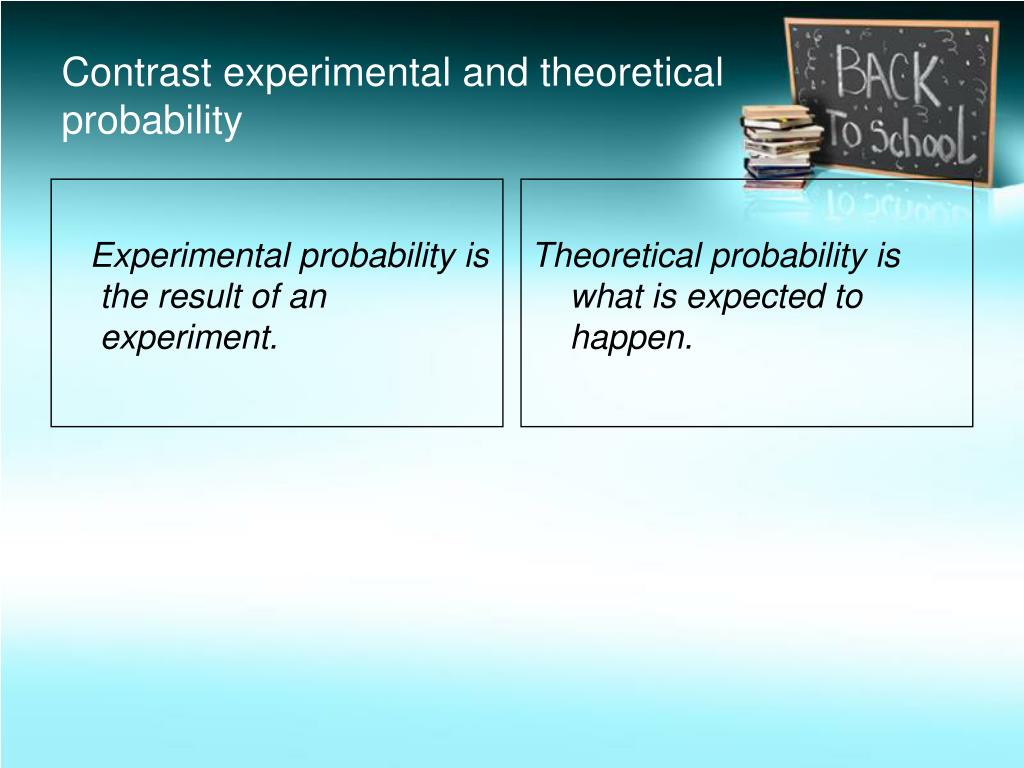
PPT Experimental Vs. Theoretical Probability PowerPoint Presentation ID1379596
Theoretical probability is the probability that is calculated using math formulas. This is the probability based on math theory. Experimental Probability Experimental probability is calculated when the actual situation or problem is performed as an experiment.

Theoretical vs. Experimental Probability YouTube
See What Users Love About Opera Desktop. Download the Browser today. Don't miss Opera Browser: The ultimate browsing experience.
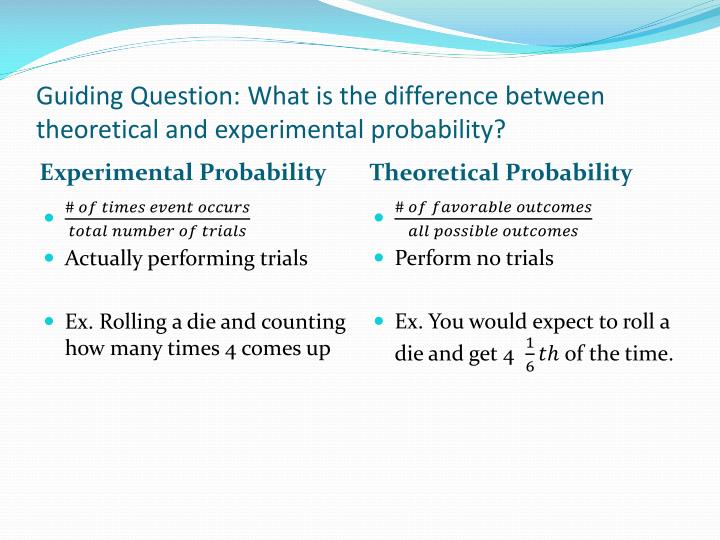
PPT 11.2 Theoretical and Experimental Probability PowerPoint Presentation ID2537712
#Probability #Matheducation #Instructabeats #mathGuided Notes: https://docs.google.com/document/d/1SqmCSbrV2oYZhbamcm9blZuVdYvo8MLt23Rg1yRWR_g/copy
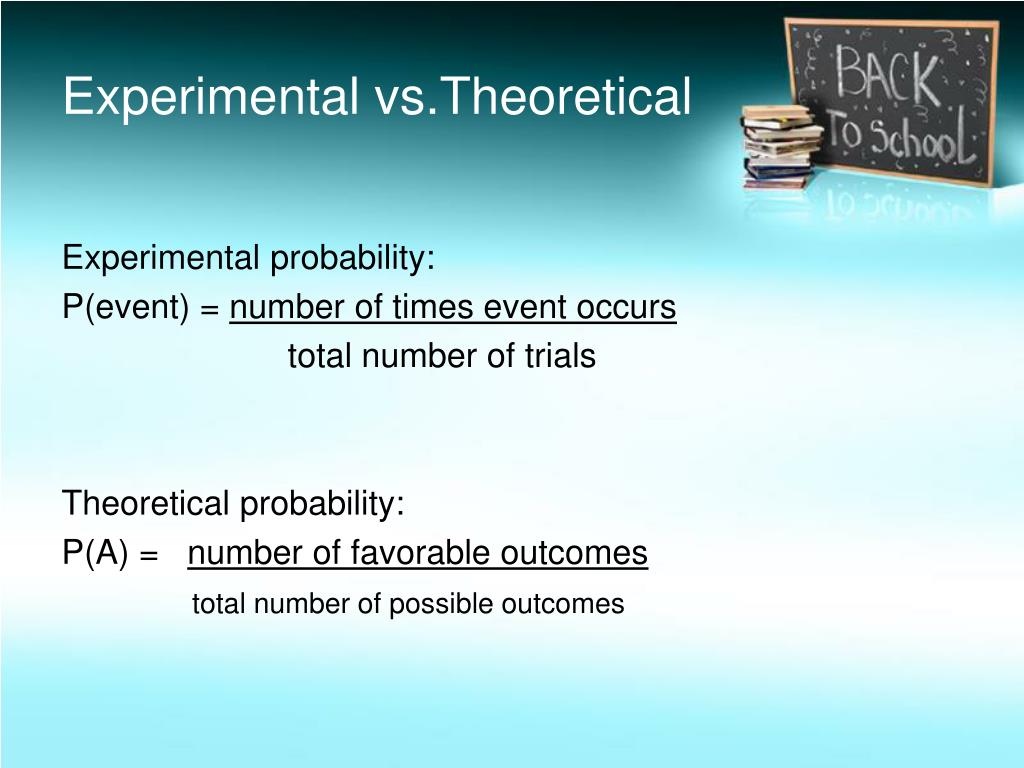
PPT Experimental Vs. Theoretical Probability PowerPoint Presentation ID1379596
Experimental Probability In this video, we are going to learn about the differences between theoretical and experimental probability. After you finish this lesson, view all of our Algebra 1 lessons and practice problems. Let's use rolling a dice as an example. Use P to represent probability.

Experimental vs Theoretical Probability Theoretical vs Experimental Probability
In order words, theoretical probability represents how likely an event is to happen. On the other hand, experimental probability illustrates how frequently an event occurs in an experiment. Read on to find out the differences between theoretical and experimental probability.